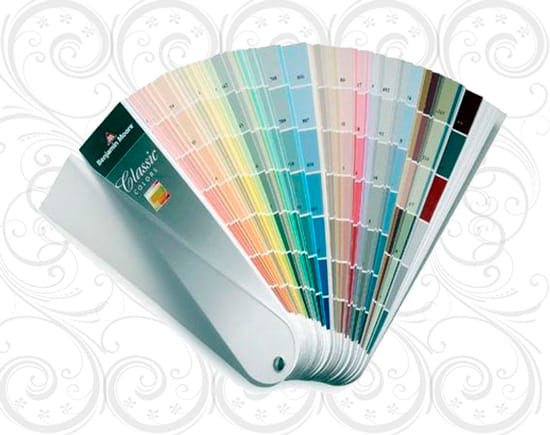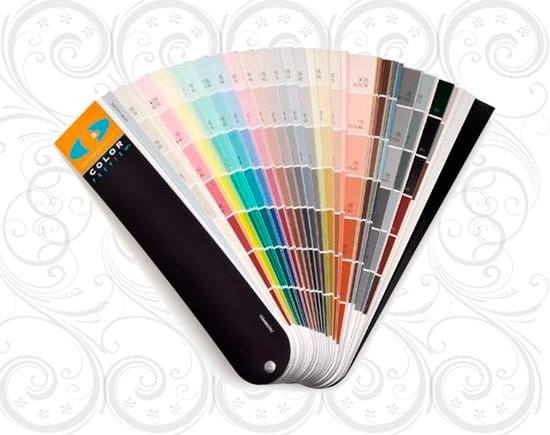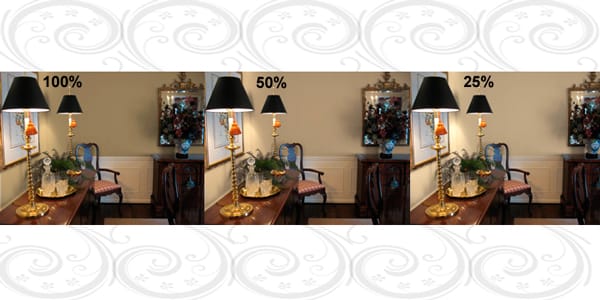How Strips of Paint Color Chips Work

Some strips of paint color chips seem to be neatly organized from darkest to lightest while others are comprised of colors that relate and harmonize, but don’t quite look like a literal stepping down in scale.
For this quick podcast, I’m going to reference two commonly used collections of colors from Ben Moore as examples, Classic Colors and Color Preview.
Due to an average of three to four colorants per color, the nearly 30-year-old Classic Colors collection offers the option of complex, natural colors. The Classic Colors fandeck:

Even though colors vary monitor to monitor, I hope you can see in this strip of blues from Classic Colors collection how color character and nuance is less consistent compared to the strip of pinks pulled from the Color Preview palette.
 Color Preview was released in 2000 and its intent is to be a cleaner, clearer counterpoint to the muted Classic Colors. The Color Preview fandeck:
Color Preview was released in 2000 and its intent is to be a cleaner, clearer counterpoint to the muted Classic Colors. The Color Preview fandeck:

Achieving the more direct and simple Color Preview colors, like you see on this strip of pinks means using – on average – just one to two colorants.

The scale of colors on the strips is not a representation of formulas simply cut by 50% or 25%, etc. Cutting formulas by a percentage is not the same as let-downs.

The term let-down refers to a deliberate — and more conscientious — approach to mix colors.
It means starting with a quantity of colorant and then decreasing — and at the same time adjusting colorant to the amount of whiteness in a particular can of base — in order to create a range of new colors from the original color. Because of the ‘adjusting’ that has to go on to translate the color from pastel base to deep base, for example, you can’t really call it cutting the formula. Rather, it’s a let-down.
The fewer colorants involved, the more consistent and even the steps of your scale of new colors will be. This is why the Color Preview strips of colors look like a literal stepping down of dark to light and Classic Colors. . . maybe not so much.